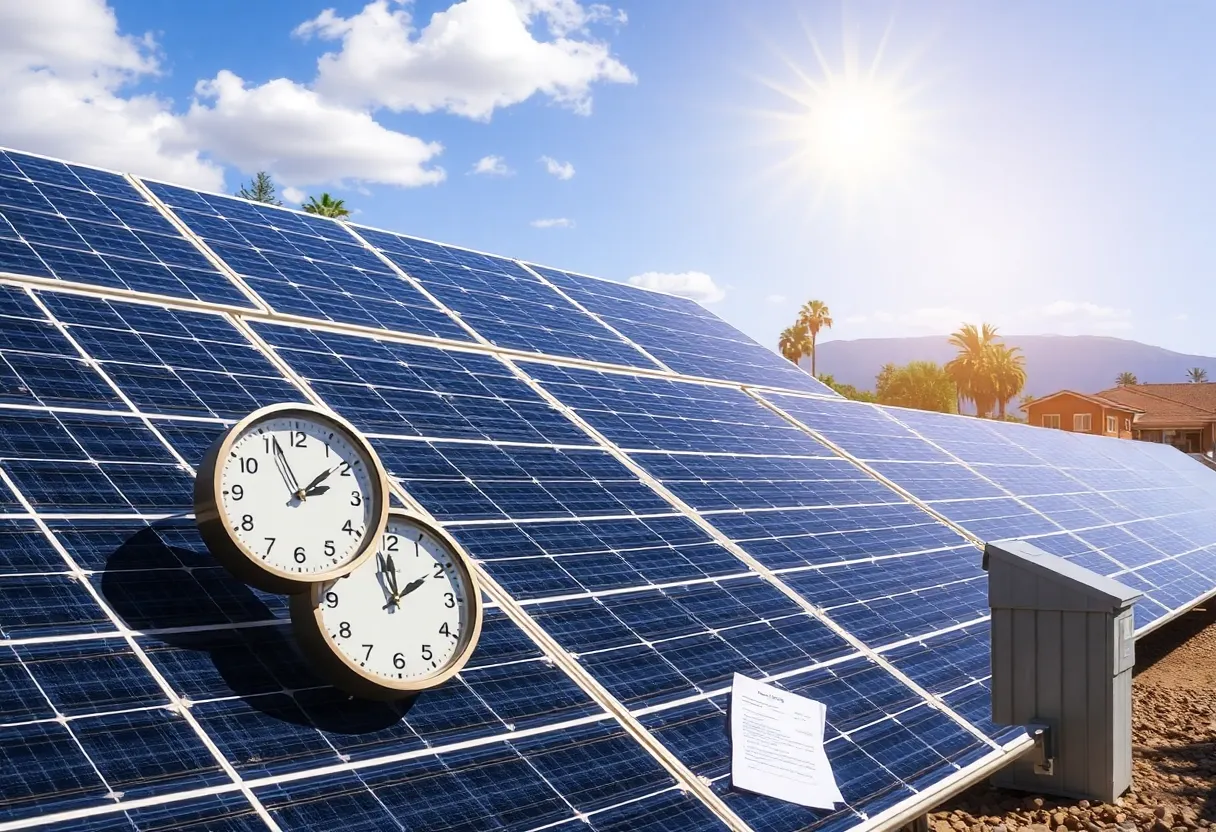News Summary
California is facing significant delays in distributing $250 million in federal funding from the Inflation Reduction Act’s Solar for All program. Despite the urgency of advancing community-scale solar installations, only a fraction of the funds have been utilized. Advocates express concern over bureaucratic hurdles, while comparisons with other states highlight California’s lag in community solar capacity. The potential termination of funding programs by the Trump administration adds pressure to resolve these issues. The future of renewable energy initiatives and access for underserved communities is at a critical juncture.
California regulators are currently facing significant delays in distributing $250 million in federal funding allocated from the Inflation Reduction Act’s Solar for All program. This program is designed to support community-scale solar installations, but little progress has been made since the funds were announced by the Environmental Protection Agency (EPA) in April 2024. As of now, only $100,641 of the allocated funds have been spent, raising serious concerns about the state’s ability to develop vital community solar initiatives.
The urgency of this situation is further compounded by the threats posed by the Trump administration, which has indicated plans to terminate programs aimed at enabling access to solar energy for everyday individuals. This places California’s renewable energy goals and programs in jeopardy, as the state struggles with slow processes in deploying federal resources.
Advocates for solar energy, like those from Dimension Energy, express their frustration with the California Public Utilities Commission (CPUC) due to the slow rollout of the funding. Notably, the CPUC only established a tariff structure for community solar programs in May 2024. However, the structure has been criticized for not providing adequate incentives for projects, resulting in diminished payments for solar energy generated.
Administrative Law Judge Valerie Kao has called for input on spending the Solar for All funding, with a feedback deadline set for April 2029. Meanwhile, the CPUC’s website indicates that state agencies are still in an “administrative and planning phase,” suggesting that the funds are caught in bureaucratic delays. Attorney Matthew Freedman states that these slow processes are likely wasting the substantial federal support allocated to California.
Currently, California ranks low in community solar capacity compared to other leading states. With only 217 megawatts (MW) of community solar capacity, it pales in comparison to Florida’s 3,873 MW and New York’s 2,110 MW. While states like Illinois are making strides—having spent $11 million of their $156 million allocation—California’s sluggish pace stands out, raising alarms among energy advocates and industry leaders.
Critics, including Derek Chernow from the Coalition for Community Solar Access, have characterized California as a laggard in clean energy initiatives, emphasizing the necessity for stronger leadership in the community solar sector. Further compounding the issue, a bill sponsored by the community solar industry (AB 1260) aimed at expediting the funding program failed to pass. Nonetheless, Assemblymember Chris Ward plans to reintroduce it the following year, making it clear that California’s efforts must not overly rely on federal funding.
Despite defending its renewable energy stance against federal actions—including lawsuits related to electric vehicle charging funding—California has yet to clarify whether it intends to pursue legal action against the Trump administration’s funding terminations. If the federal support is suspended, it is expected to increase the costs of community solar projects, especially affecting low-income and disadvantaged communities that the initiative is intended to benefit.
The timeline for California to harness the $250 million in federal solar funding is now a critical issue, especially with the Trump administration’s impending cessation of such programs. The future of the Solar for All initiative hangs in a delicate balance as state leaders work to turn around the current stalemate and establish access to renewable energy for all of California’s communities.
Deeper Dive: News & Info About This Topic
- Politico: California Solar Funding and Trump
- Wikipedia: Solar Energy in the United States
- Los Angeles Times: EPA Eliminates Rooftop Solar Grant Program
- Google Search: California Solar Initiatives
- Consumer Affairs: California Solar Incentives
- Google Scholar: California Solar Energy
- CNET: California Solar Panel Incentives
- Encyclopedia Britannica: Solar Energy
- Utility Dive: California’s Budget for Grid Reliability
- Google News: California Solar Funding Delays

Author: STAFF HERE HUNTINGTON BEACH
The Huntington Beach Staff Writer represents the experienced team at HEREHuntingtonBeach.com, your go-to source for actionable local news and information in Huntington Beach, Orange County, and beyond. Specializing in "news you can use," we cover essential topics like product reviews for personal and business needs, local business directories, politics, real estate trends, neighborhood insights, and state news affecting the area—with deep expertise drawn from years of dedicated reporting and strong community input, including local press releases and business updates. We deliver top reporting on high-value events such as the Huntington Beach Surf City USA Marathon, the U.S. Open of Surfing, Fourth of July celebrations at the Huntington Beach Pier, and community festivals at Huntington Beach Central Park. Our coverage extends to key organizations like the Huntington Beach Chamber of Commerce and Visit Huntington Beach, plus leading businesses in retail, hospitality, and outdoor recreation that drive the local economy. As part of the broader HERE network, including HEREAnaheim.com, HERECostaMesa.com, HERESantaAna.com, and HERELosAngeles.com, we provide comprehensive, credible insights into Southern California's dynamic landscape.





